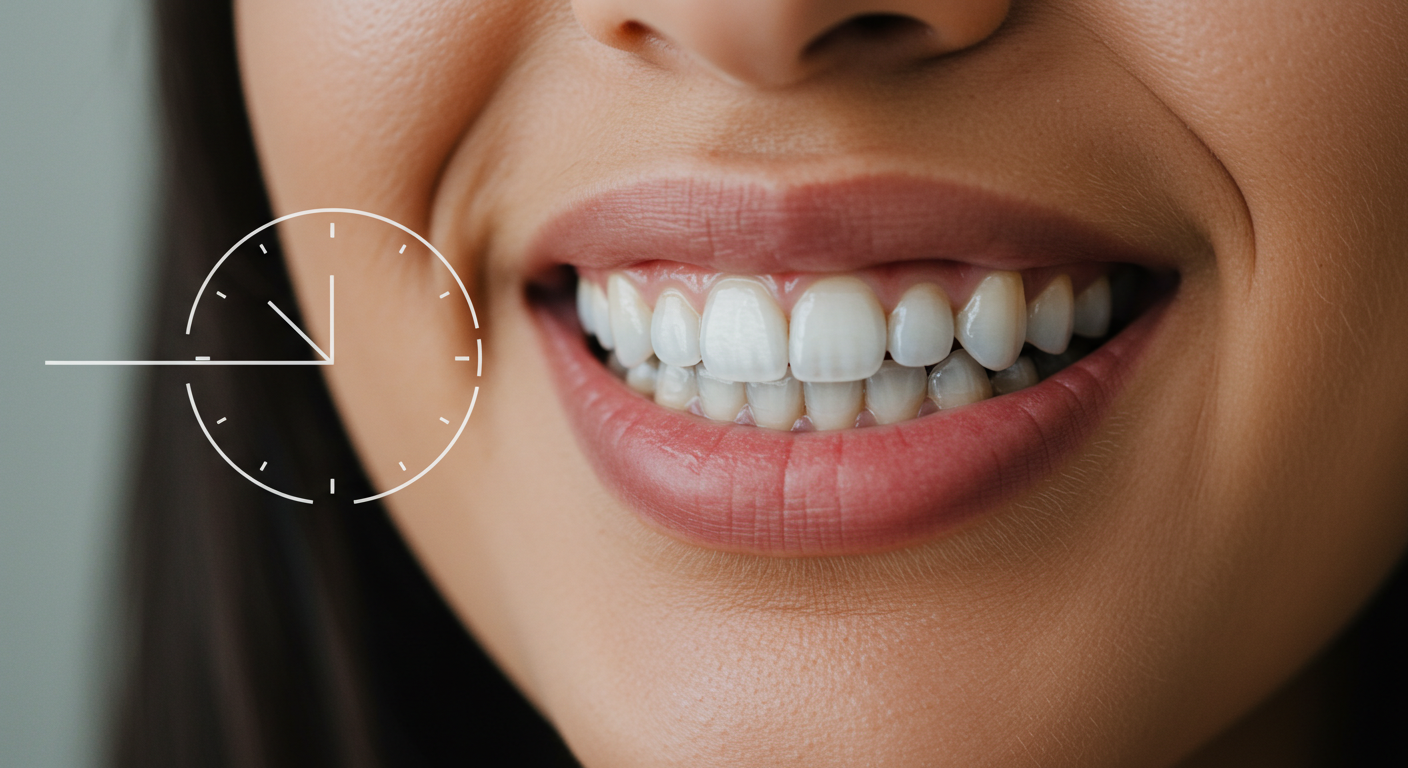Contents

Dental Aligners: How Many Hours a Day Do You Need to Wear Them?
Clear dental aligners represent a major advance in orthodontics, valued for their discretion and effectiveness. Unlike fixed appliances like braces, one of the great advantages of aligners is that they are removable.
However, this freedom raises a crucial question: how long do you really need to wear your aligners each day to ensure the success of the treatment? Adhering to the wear time is essential, but what happens if you forget them for a few hours?
The Golden Rule: 22 Hours a Day
The nearly universal recommendation from orthodontists and aligner manufacturers (like Invisalign) is unequivocal: for optimal effectiveness, aligners must be worn for a minimum of 20 to 22 hours out of 24.
Why such a long duration?
The effectiveness of aligners relies on applying a light but constant force to the teeth. It is this continuous pressure that allows the teeth to move progressively towards the desired position, according to the established treatment plan. Insufficient wear time interrupts this process.
If orthodontic elastics are used in conjunction with aligners (for example, to correct the bite), the same rule applies: they must be worn according to the practitioner's specific instructions, usually at the same time as the aligners.
When Should You Remove Your Aligners?
The benefit of being removable does not mean you can take out your aligners at any time. The only situations where it is imperative and recommended to remove them are:
- For eating: You should never eat with your aligners in to avoid damaging them (cracks, warping) and for hygiene reasons.
- For drinking anything other than cool water: Hot beverages can warp the plastic. Sugary, acidic, or colored drinks (sodas, juices, coffee, tea, wine) can get trapped in the aligners, promoting cavities and staining the aligners.
- For brushing your teeth and flossing: Rigorous oral hygiene is essential after every meal before putting your aligners back in.
Added up, these removal times should ideally not exceed 2 hours per day to respect the 22-hour wear recommendation.

What Happens if You Don’t Wear Your Aligners Enough?
Not respecting the recommended wear time (20-22h/day) can have several negative consequences on the treatment:
- Slowing down the treatment: The teeth do not move as quickly or as completely as planned. Each aligner is designed for a specific movement over a given period (1-2 weeks). If this movement is not completed, the next aligner may not fit properly.
- Extending the total treatment time: If the movements are slowed, your orthodontist might ask you to wear each set of aligners longer, thus extending the overall duration of the treatment.
- Increased discomfort or pain: Trying to force the next aligner when the teeth have not moved enough can be painful and ineffective.
- Compromised final result: In cases of repeated non-compliance, the desired final result might not be achieved.
- Need to "go back": If the next aligner really does not fit, your practitioner might ask you to go back to the previous aligner for a few more days.
What to do in case of a prolonged lapse?
If you have taken your aligners out for several extra hours, or even a day or two, contact your orthodontist immediately. Do not take the initiative to move on to the next aligner. They will tell you what to do (continue with the current aligner longer, go back to the previous one...).
What if You Lose or Break an Aligner?
Losing or breaking your aligners can happen. Again, quick action is essential:
- Contact your practitioner without delay.
- Do not throw away the previous pair of aligners! Keep them safe.
- Depending on when the loss/break occurs in the current aligner's wear cycle, your orthodontist may advise you to:
- Either go back to the previous aligner while waiting for the new one.
- Or, if you were close to the end of the cycle, move directly to the next aligner (this may cause temporary discomfort).
- Or order a replacement aligner.
Never go for a long time without wearing an aligner, as you risk the teeth starting to shift back to their previous position.
The Special Case of Retainers
At the end of your orthodontic treatment (with aligners or braces), a retention phase is necessary to maintain the results. Retention aligners (like Invisalign's Vivera® retainers) are often used.
For these, the wear rules are different and defined by your practitioner:
- Initially: Often worn full-time (day and night, except for meals) for a few weeks or months.
- Then: Transition to wearing them only at night, every night.
- Long-term: Nightly wear may sometimes be spaced out (a few nights a week), but it is often recommended for life to ensure the stability of the smile.
It is crucial to follow your orthodontist's specific recommendations for the retention phase.
Conclusion: Discipline is the Key to Success
Wearing your alignment trays for at least 22 hours a day is fundamental for the proper progress and effectiveness of your invisible orthodontic treatment. While occasional lapses of a few hours are usually manageable by following your practitioner's advice, regular lack of diligence will inevitably compromise the results and the duration of the treatment.
The freedom offered by removable aligners therefore comes with a responsibility: to be diligent in order to achieve the desired smile under the best conditions.
